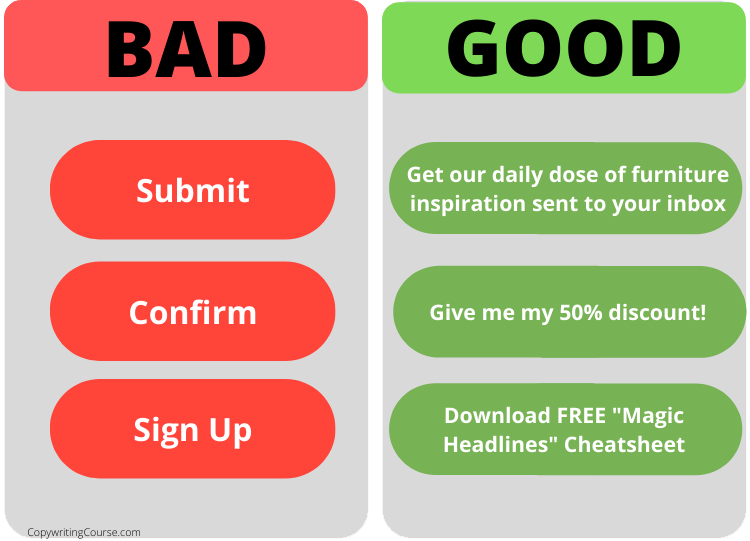There are many bad copywriting examples, but what makes these pieces so offensive? Here are a few of the most common: negative headlines, vague language, and negative emotions. To avoid being labeled as a “bad copywriter,” avoid the following mistakes:
Negative headlines
You’ve probably seen negative headlines in copywriting examples, but what are they and how can they be effective? If you use them correctly, negative headlines can actually be quite powerful. You can reinforce them with benefits, such as the result of not taking action. You can even use stirring headlines to get readers’ attention. Here are some good examples. Listed below are some ways to use negative headlines in your copy.
Gluttony marketing is a great way to get your audience to buy into your product. This technique essentially means taking a customer’s desire and multiplying it by 100. This technique works in a wide variety of niches and verticals, and it is particularly effective for products that generate more profit. Gluttony marketing is especially effective when used with negative headlines. For this strategy to work, you need to carefully monitor the performance metrics in Google Analytics.
A negative headline can sway visitors’ interpretation of everything on a website. If your headline isn’t strong enough, you can taint other elements in your copy with it. The worst example of this is when your headline has no impact on your article’s content. Even if the article itself is a solid piece of content, you’ll still be out of luck unless you include powerful tips and strategies. Remember that this headline is just the first draft.
Unnecessary big words
While you should avoid using unnecessarily large words in your copywriting, you can use complex words sparingly. The goal of copywriting is to communicate ideas and information without wasting space or time. For example, if you want to sell a product, avoid using the word “serious.” In a similar way, don’t use “extremely” or ‘awful’. Instead, use simpler words.
Clumsy language
Even the most talented copywriters can make mistakes in their copywriting. For example, one customer called out a copywriter for using clumsy language when discussing a product. While this can happen to anyone, it’s especially common in copywriting. Here are a few mistakes to avoid in your copy. Use the active voice whenever possible. Use the third person to make your copy more personal.
Negative emotions
When used correctly, negative emotions in bad copywriting examples can create an effective sales letter. Instead of using the dreaded “F” word, focus on the reader’s emotions. Using the word “fear” triggers the reader’s fight or flight response. If the reader is afraid of what could happen next, they are unlikely to purchase your product. Contrastingly, a survivable catastrophe may be painful, but not fatal. In this case, a product may offer some hope and relief from the pain.
While emotion theories may explain our feelings, they leave out the more common negative ones. The following list of 158 negative emotions provides a basic understanding of how we can avoid triggering these emotions. The list is available in excel, word, and PDF files. You can also refer to the full list of emotions to better understand the type of copy you should use. While there are several common negative copywriting examples that are easy to spot, they all contain at least one of the following four types of emotions:
Homophones
When we read or hear a word, we can often make comparisons, such as the spelling, meaning, or pronunciation of the same word. However, these comparisons can lead to misunderstandings, and if you don’t recognize these mistakes, you can use a dictionary or even memorize the correct spelling. Homophones in bad copywriting examples can cause people to cringe, and they’re often a sign of amateur writing.
Words that are pronounced the same but have different spelling are called homophones. If you see a word with the same spelling but a different pronunciation, it is a homophone. Another example is when a word sounds similar to a word with a different meaning, such as “wax.”
If you are writing on social media, make sure you check for homonyms. Many people spend less time making spelling mistakes than they should, which can lead to misunderstandings. Taking some time to check your copy before you submit it is a great way to check for mistakes. Homophones are not a problem if you use a spellcheck, but it’s a good idea to double-check your writing.
Lack of credibility
There are a number of reasons why copywriting examples fail to create the desired effect. A generic statement sounds like a marketing blurb and lacks credibility. To increase credibility, be specific about your product or service. You can cite well-known stories and quotes, but never claim credit for someone else’s idea. This will weaken the message you’re trying to convey. To overcome the lack of credibility in copywriting examples, try to rewrite a sentence that contains a claim that your product or service is better than the competition.
If you're interested in learning more about copywriting, click here to check out a great course. It'll teach you everything you need to know to start writing effective copy that sells.
Did you miss our previous article…
https://thewritersden.top/?p=282
